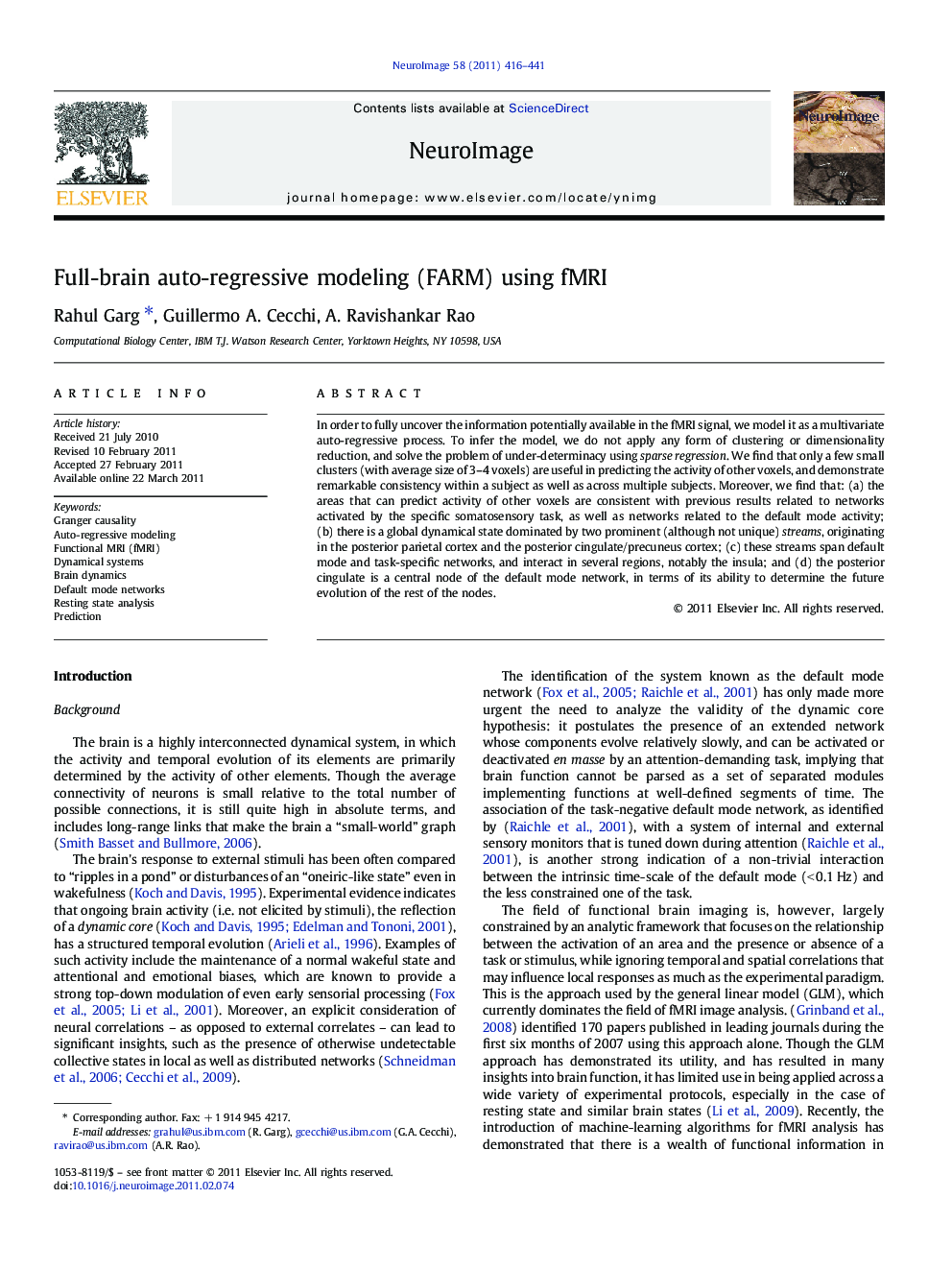| Article ID | Journal | Published Year | Pages | File Type |
|---|---|---|---|---|
| 6034091 | NeuroImage | 2011 | 26 Pages |
In order to fully uncover the information potentially available in the fMRI signal, we model it as a multivariate auto-regressive process. To infer the model, we do not apply any form of clustering or dimensionality reduction, and solve the problem of under-determinacy using sparse regression. We find that only a few small clusters (with average size of 3-4 voxels) are useful in predicting the activity of other voxels, and demonstrate remarkable consistency within a subject as well as across multiple subjects. Moreover, we find that: (a) the areas that can predict activity of other voxels are consistent with previous results related to networks activated by the specific somatosensory task, as well as networks related to the default mode activity; (b) there is a global dynamical state dominated by two prominent (although not unique) streams, originating in the posterior parietal cortex and the posterior cingulate/precuneus cortex; (c) these streams span default mode and task-specific networks, and interact in several regions, notably the insula; and (d) the posterior cingulate is a central node of the default mode network, in terms of its ability to determine the future evolution of the rest of the nodes.
Graphical abstractDownload high-res image (51KB)Download full-size imageResearch highlights⺠It is feasible to build full-brain, voxel-wise auto-regressive model for fMRI data. ⺠A small number of voxels are useful in predicting the future of other voxels. ⺠The global dynamical state is dominated by two prominent (non-unique) "streams". ⺠These streams span default-mode and task-specific networks, and interact in the insula. ⺠The posterior cingulate is a central node of the default mode network.
